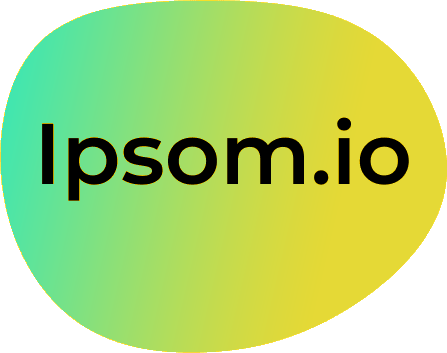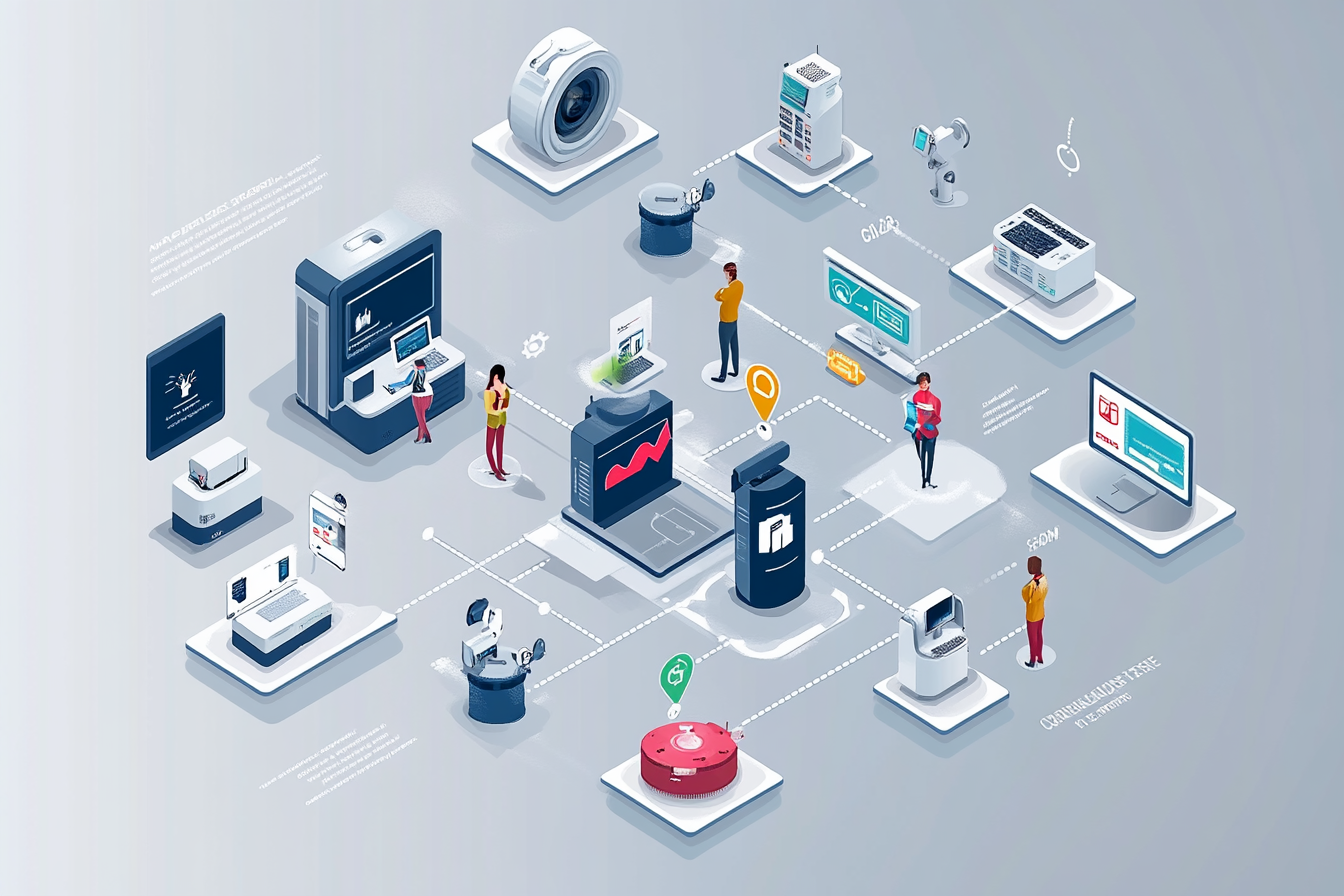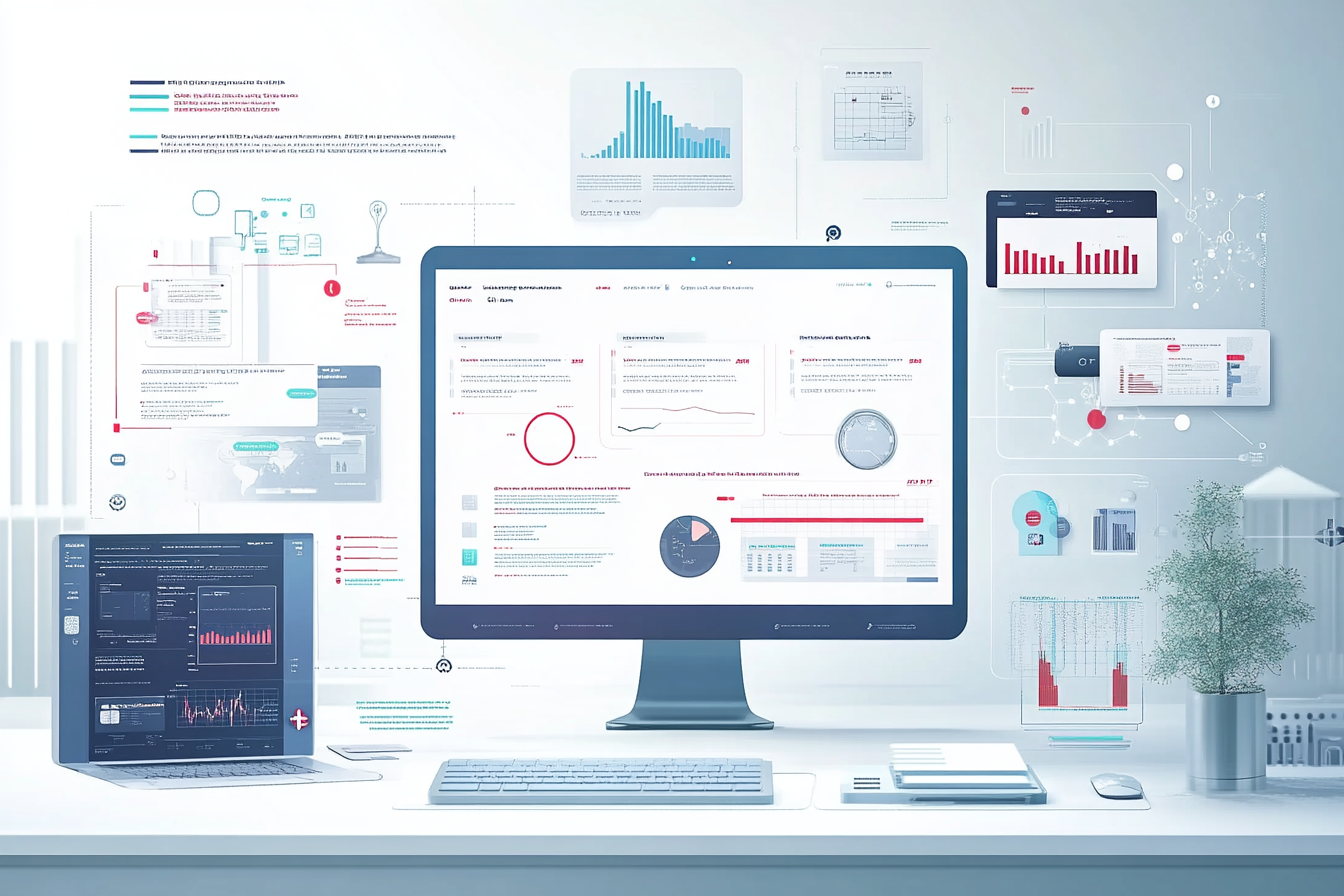Automated customer service is transforming the way businesses interact with their customers, enhancing service efficiency and increasing satisfaction. By leveraging software solutions like chatbots, help desks, and automated ticketing systems, companies can improve response times and streamline their service processes.
Key Takeaways
- Definition: Automated customer service utilizes technology (chatbots, AI) to handle inquiries with minimal human intervention.
- Impact: Automation enhances efficiency, offers 24/7 support, and reduces service costs while improving customer satisfaction.
- Balanced Approach: It’s important to combine automation with human touch for complex issues, ensuring customer satisfaction remains high.
- Implementation Steps: Focus on self-service options, chatbot integration, and automated ticketing to optimize customer service workflows.
Discover how ipsom.io can help optimize your customer service automation process!
Understanding Customer Service Automation
- Customer Service Automation: Utilizes technology to enhance service efficiency and improve customer satisfaction.
- Leverage Tools: Incorporates tools such as chatbots and AI to handle inquiries with minimal human intervention.
- Focus for Agents: Allows customer service agents to concentrate on more complex issues that require a personal touch.
What is Customer Service Automation?
- Definition: Refers to the use of software and technology to streamline various service tasks.
- Focus: Automates repetitive tasks such as:
- Responding to FAQs
- Gathering data
- Outcome: Enables agents to effectively handle intricate problems, leading to a more productive and engaged support team.
Benefits of Customer Service Automation
Automating customer service provides several notable benefits:
- Increased Efficiency:
- Automates simple tasks, including greetings and troubleshooting.
- Allows for faster responses to customer inquiries.
- Cost-Effectiveness:
- Companies can reduce their support team size by up to 40%.
- Saves on overhead costs.
- Improved Customer Satisfaction:
- Quicker response times enhance user experience.
- Ability to provide support 24/7, catering to customers' needs at any time.
Common Automation Tools
A variety of tools facilitate customer service automation, including:
- Chatbots and Virtual Assistants:
- Excellent for handling frequently asked questions and basic inquiries.
- Help Desk and Ticketing Software:
- Organizes and tracks customer requests, ensuring nothing falls through the cracks.
- Knowledge Bases and Self-Service Portals:
- Grant customers immediate access to essential information, enhancing their experience.
- Automated Feedback Surveys:
- Enable companies to gather valuable insights post-interaction.
By understanding these components, businesses can leverage customer service automation to optimize their interactions and elevate overall customer satisfaction.
Implementing Customer Service Automation
To successfully implement customer service automation, businesses need a structured approach. This ensures that automation effectively enhances service delivery without compromising quality.
Steps to Implement Customer Service Automation
-
Identify Automation Opportunities:
- Pinpoint areas with the highest potential for impact (e.g., handling FAQs, processing ticket requests).
- Focus on repetitive tasks that consume time and resources.
-
Select Appropriate Tools:
- Choose software that aligns seamlessly with your business operations.
- Look for tools that can integrate smoothly with existing systems to avoid disruptions.
-
Implement Self-Service Options:
-
Develop comprehensive knowledge bases and resources.
-
Allow customers to find answers independently, enhancing satisfaction and reducing support workload.
-
Utilize Chatbots:
- Deploy chatbots for efficient, 24/7 support.
- Handle routine inquiries instantly to free up human agents for more complex issues.
-
Automate Ticketing Systems:
- Streamline customer inquiries using automated ticketing systems.
- Efficiently route tickets to the appropriate agents, reducing wait times.
By following these steps, businesses can create a robust foundation for customer service automation. The focus should always remain on:
- Enhancing customer experience
- Improving operational efficiency
Challenges and Considerations
While customer service automation offers significant benefits, it also presents various challenges. Understanding these challenges is crucial for successful implementation.
Potential Drawbacks of Customer Service Automation
The lack of human touch is a key concern. Automated systems often lack the empathy needed for sensitive situations. This can lead to customer frustration, especially when nuanced problems arise.
Another drawback is the inability to handle complex issues. Automated tools excel at simple tasks but may struggle with intricate inquiries. For these cases, it's essential to have human agents available.
Moreover, there's the issue of job displacement. As businesses automate more processes, traditional customer service roles may decline. This can create anxiety among employees about job security.
Lastly, deploying advanced automation tools can be resource-intensive. Implementing sophisticated AI solutions requires significant investment in time and money.
Importance of Balancing Automation with Personalization
To address these challenges, striking a balance between automation and personalization is vital. Human agents should handle complex interactions, ensuring customers feel heard and valued.
Establishing clear escalation paths is essential. Customers should have a straightforward way to reach a human agent if their issues remain unresolved. This ensures that even automated systems maintain a focus on customer satisfaction.
Monitoring and Improving Automated Customer Service
Monitoring and improving automated customer service is crucial to maintaining high satisfaction levels. Continuous evaluation ensures processes remain effective and relevant to customer needs.
Regular Auditing of Automated Processes
Customer Feedback is vital. Utilizing surveys helps to measure satisfaction and identify areas needing improvement. Regularly engaging with customers allows businesses to understand their experiences better. Moreover, ensure that the knowledge base updates are frequent. All automated responses and FAQs must be accurate and current. This ongoing effort prevents confusion and enhances the self-service experience.
Performance Metrics should be analyzed consistently. Monitoring metrics such as ticket volume, response times, and customer satisfaction scores helps assess the effectiveness of automated systems. These numbers provide insights into where adjustments may be needed and identify trends that require attention.
Case Studies & Examples
Success Stories can be enlightening. For instance, Degreed successfully improved its efficiency and customer satisfaction through automation. Such case studies demonstrate the potential benefits and best practices that other businesses can emulate.
Tool Comparisons are also beneficial. An overview of popular automation tools—such as HubSpot’s Service Hub, Freshdesk, and Zoho Desk—showcases their capabilities. These comparisons help businesses select the right tools to enhance their customer service automation strategies.
Implementing these strategies will ensure that your automated customer service remains effective and responsive to customer needs.
FAQ
What is customer service automation?
- Definition: Customer service automation uses technology to handle customer inquiries with minimal human intervention.
- Key Tools: Includes tools like chatbots and automated ticketing systems.
- Benefits: Streamlines support processes and improves efficiency.
How can automation improve customer satisfaction?
- Faster Response Times: Enables quicker replies to customer inquiries.
- 24/7 Support: Provides assistance around the clock.
- Focus on Complex Issues: Frees human agents to tackle more complex problems, enhancing overall customer experience.
What tasks should not be automated in customer service?
- Empathy-Required Tasks: Issues that necessitate human empathy should remain with agents.
- Complex Problem-Solving: Situations that involve nuanced issues are best handled by humans.
What tools are best for customer service automation?
- Chatbots: Ideal for managing FAQs.
- Help Desk Software: Options like Freshdesk enhance ticket management.
- Self-Service Portals: Empower customers to find information independently.
- Choosing the Right Tool: Consider your specific business needs and existing systems.
How do we balance automation with the human touch?
- Clear Escalation Paths: Establish routes for transferring complex issues to human agents.
- Regular Assessment: Evaluate interactions to identify where human involvement can boost satisfaction.
What are the common challenges of implementing customer service automation?
- Lack of Human Touch: Automation can feel impersonal.
- Inability to Handle Complex Issues: Basic tools may struggle with nuanced problems.
- Job Displacement Concerns: Employees may fear losing their roles due to automation.
- Resource Requirements: Setting up advanced automation solutions can require significant investment.
How can businesses monitor and improve automated processes?
- Customer Feedback: Gather insights to gauge satisfaction.
- Knowledge Base Updates: Regularly refresh information for accuracy.
- Performance Metrics Analysis: Track ticket volume and customer satisfaction scores to identify areas of improvement.
Are there risks of job displacement with customer service automation?
- Impact on Traditional Roles: Automation may transform existing customer service positions.
- Communication: Companies should inform employees about changes.
- Upskilling Opportunities: Provide training for staff to adapt to new technologies.
For further assistance and to optimize your processes, don't hesitate to reach out to the team at ipsom.io.






